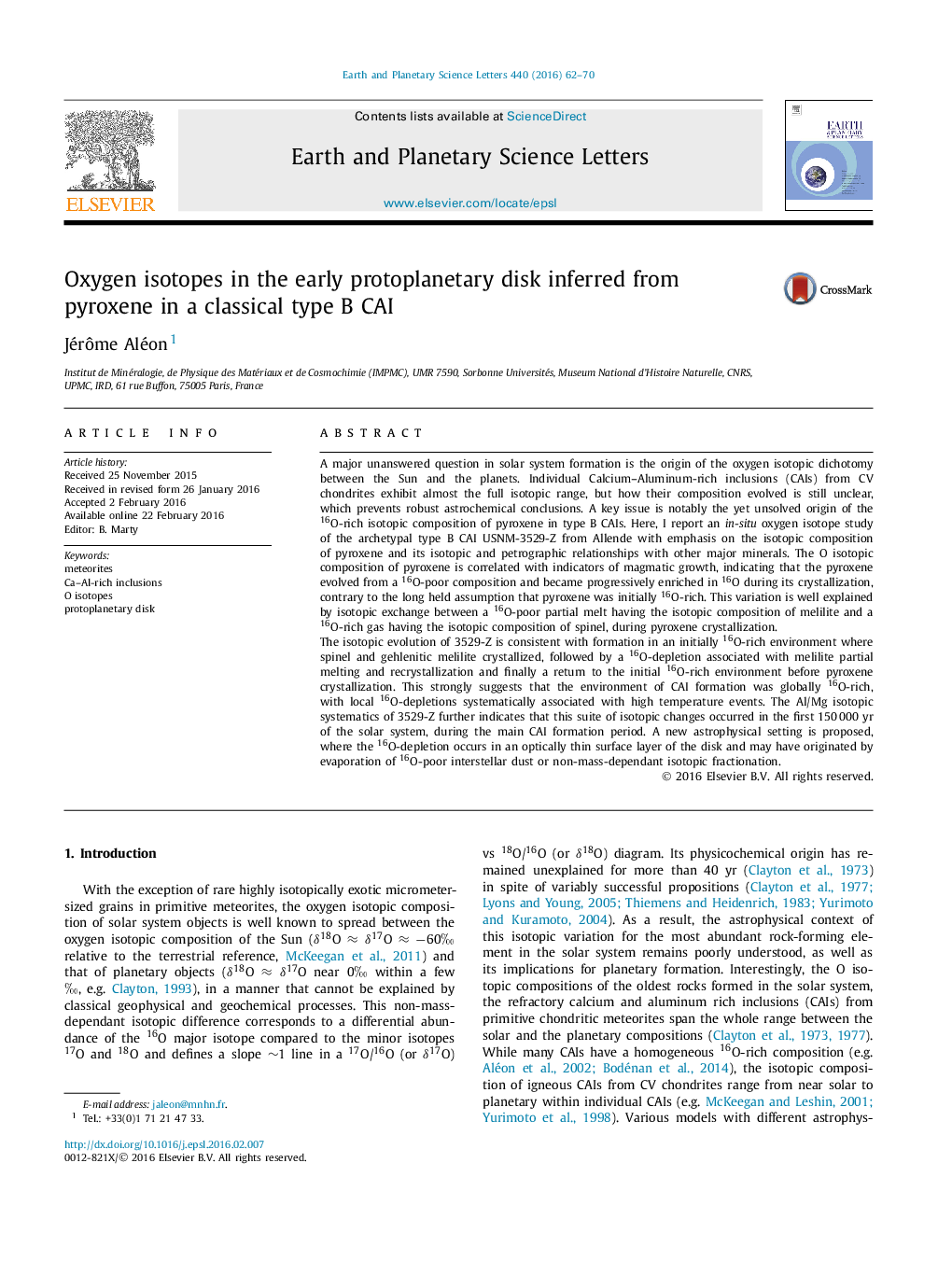| کد مقاله | کد نشریه | سال انتشار | مقاله انگلیسی | نسخه تمام متن |
|---|---|---|---|---|
| 6427588 | 1634716 | 2016 | 9 صفحه PDF | دانلود رایگان |

- Pyroxene in a type B CAI evolved from 16O-poor to 16O-rich during crystallization.
- Igneous CAIs experienced 16O-depletion during partial melting of melilite.
- CAIs formed in a globally 16O-rich medium with local 16O-depletion(s).
- A vertical isotopic zoning of the protoplanetary disk is consistent with CAIs.
A major unanswered question in solar system formation is the origin of the oxygen isotopic dichotomy between the Sun and the planets. Individual Calcium-Aluminum-rich inclusions (CAIs) from CV chondrites exhibit almost the full isotopic range, but how their composition evolved is still unclear, which prevents robust astrochemical conclusions. A key issue is notably the yet unsolved origin of the 16O-rich isotopic composition of pyroxene in type B CAIs. Here, I report an in-situ oxygen isotope study of the archetypal type B CAI USNM-3529-Z from Allende with emphasis on the isotopic composition of pyroxene and its isotopic and petrographic relationships with other major minerals. The O isotopic composition of pyroxene is correlated with indicators of magmatic growth, indicating that the pyroxene evolved from a 16O-poor composition and became progressively enriched in 16O during its crystallization, contrary to the long held assumption that pyroxene was initially 16O-rich. This variation is well explained by isotopic exchange between a 16O-poor partial melt having the isotopic composition of melilite and a 16O-rich gas having the isotopic composition of spinel, during pyroxene crystallization.The isotopic evolution of 3529-Z is consistent with formation in an initially 16O-rich environment where spinel and gehlenitic melilite crystallized, followed by a 16O-depletion associated with melilite partial melting and recrystallization and finally a return to the initial 16O-rich environment before pyroxene crystallization. This strongly suggests that the environment of CAI formation was globally 16O-rich, with local 16O-depletions systematically associated with high temperature events. The Al/Mg isotopic systematics of 3529-Z further indicates that this suite of isotopic changes occurred in the first 150â000 yr of the solar system, during the main CAI formation period. A new astrophysical setting is proposed, where the 16O-depletion occurs in an optically thin surface layer of the disk and may have originated by evaporation of 16O-poor interstellar dust or non-mass-dependant isotopic fractionation.
Journal: Earth and Planetary Science Letters - Volume 440, 15 April 2016, Pages 62-70